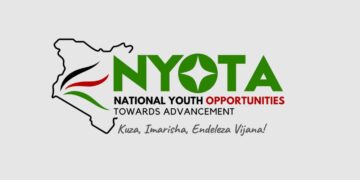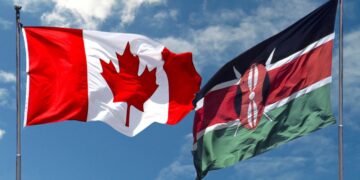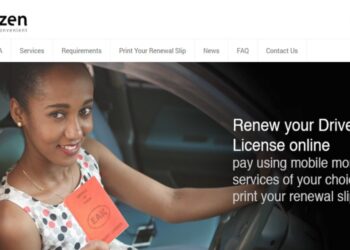PR is an essential part of your business. It’s also one of the most expensive parts of your business, which can make operating on a narrow budget seem impossible. A strong Public Relations (PR) strategy is vital for building a positive reputation, managing public perception, and driving engagement with your target audience. Whether you’re a startup, an established company, or an individual looking to boost personal branding, a well-thought-out PR strategy can make all the difference.
1. Define your goals
Start by identifying what you want to achieve with your PR efforts. Common PR goals include:
- Building brand awareness.
- Managing reputation.
- Launching a product or service.
- Establishing thought leadership.
- Driving website traffic or sales.
Having clear, measurable objectives ensures that your PR activities align with your overall business goals. Ensure these goals follow the SMART criteria: Specific, Measurable, Achievable, Relevant, and Time-bound. For instance, instead of aiming to “increase brand awareness”, specify that you aim to “gain 10 new media placements in industry publications within six months.” Additionally, align your PR goals with your organization’s broader marketing and operational objectives. Integration between teams fosters synergy and ensures that PR efforts amplify other initiatives.
2. Understand your audience
Understanding your target audience is critical for crafting a message that resonates. Conduct comprehensive research to identify their:
- Demographics (age, gender, location, income level, etc.).
- Psychographics (values, interests, attitudes, and lifestyle choices).
- Pain points and challenges.
- Media consumption habits.
Use surveys, focus groups, or social listening tools to gather data. From this research, create detailed audience personas. For example, if you’re targeting eco-conscious millennials, your PR strategy should emphasize sustainability initiatives and use digital platforms they frequent, like Instagram and TikTok. Understanding your audience also helps you anticipate their responses and preferences, allowing you to tailor your PR campaigns effectively.
3. Craft key messages
Key messages are the foundation of your PR strategy. They represent what you want your audience to remember about your brand. Effective key messages should:
- Highlight your unique value proposition.
- Address the needs and interests of your audience.
- Be concise, clear, and consistent.
- Reflect your brand’s tone and voice.
For example, a tech startup offering cybersecurity solutions might use a message like: “Protect your digital assets with cutting-edge technology designed to outsmart modern cyber threats.” Create a messaging matrix to tailor key messages to different segments of your audience while maintaining overall consistency. This matrix ensures that your messaging remains relevant across various platforms and audiences.
4. Choose the right channels
A successful PR strategy requires reaching your audience through the channels they trust and engage with. Some common PR channels include:
- Traditional media: Newspapers, magazines, radio, and television remain credible sources for many audiences. Develop press releases, pitch stories to journalists, and secure interviews.
- Digital media: Leverage blogs, online publications, and social media platforms. A strong online presence is essential in today’s digital age.
- Owned media: Use your company’s blog, website, and newsletters to share stories and updates.
- Events and sponsorships: Hosting or sponsoring events provides direct interaction with your audience and enhances credibility.
- Influencer partnerships: Collaborate with influencers whose audiences align with your target demographic. Authentic endorsements can significantly boost your brand’s visibility.
Selecting the right mix of channels ensures your message reaches the intended audience effectively.
5. Build relationships with media and influencers
Relationships are at the heart of PR. Cultivate connections with journalists, bloggers, and influencers who align with your industry. Here’s how:
- Research: Identify individuals who cover topics relevant to your brand.
- Personalize Outreach: Tailor your pitches to their interests and the needs of their audience.
- Engage: Interact with them on social media, comment on their articles, and share their work to build rapport.
Establishing strong relationships ensures your pitches are well-received and increases the likelihood of media coverage.
6. Develop a content plan
Your content plan is a roadmap for your PR activities. It should include:
- Content calendar: Identify key dates for campaigns, such as product launches, anniversaries, or industry events.
- Content types: Plan a mix of press releases, thought leadership articles, blog posts, infographics, and videos.
- Distribution plan: Outline how and where each piece of content will be shared.
High-quality, engaging content enhances your credibility and fosters audience trust. For example, a PR campaign for a new product launch might include a series of blog posts detailing its features, customer testimonials, and a behind-the-scenes video of its development.
7. Monitor and respond to public perception
Public perception can make or break your brand. Stay proactive by monitoring:
- Media mentions: Use tools like Google Alerts, Meltwater, or Brandwatch to track mentions of your brand and competitors.
- Social media: Keep an eye on conversations about your brand and engage with followers.
- Industry trends: Stay updated on news and developments relevant to your industry.
Respond promptly to negative feedback or misinformation. A timely, transparent response can prevent minor issues from escalating into crises.
8. Leverage data and analytics
Analytics are essential for evaluating the success of your PR strategy. Measure your performance using KPIs such as:
- Media metrics: Number of articles published, audience reach, and sentiment analysis.
- Engagement metrics: Social media likes, shares, comments, and click-through rates.
- Website metrics: Traffic, referral sources, and conversion rates.
Analyze these metrics to identify strengths and areas for improvement. For instance, if a press release resulted in high engagement but low conversions, you might refine your call-to-action in future releases.
9. Be prepared for crisis management
No PR strategy is complete without a crisis management plan. Crises can range from negative reviews to major scandals. Prepare by:
- Identifying risks: List potential scenarios that could harm your reputation.
- Developing responses: Create templates for addressing common issues.
- Establishing a team: Assign roles and responsibilities to handle crises effectively.
- Responding swiftly: Act quickly and transparently to address the issue and reassure stakeholders.
For example, if a product recall occurs, communicate the issue clearly, outline the steps being taken to resolve it, and offer support to affected customers.
10. Stay consistent and flexible
Consistency builds trust and reinforces your brand identity. Ensure your messaging, visuals, and tone are aligned across all platforms and campaigns. However, flexibility is equally important. Adapt to changing circumstances, audience feedback, and emerging trends to keep your PR strategy relevant. Regularly review your PR strategy and update it based on performance metrics, industry shifts, and organizational changes. This iterative approach ensures continuous improvement and long-term success.
Final thoughts
Developing a PR strategy takes time and effort, but the rewards are well worth it. A strong PR strategy enhances your brand’s reputation, fosters trust with your audience, and drives business success. By defining clear goals, understanding your audience, crafting compelling messages, and leveraging the right channels, you can create impactful PR campaigns that resonate and deliver measurable results. Remember, effective PR is not just about promoting your brand – it’s about building meaningful relationships and creating lasting value for your audience.


































































































































































































